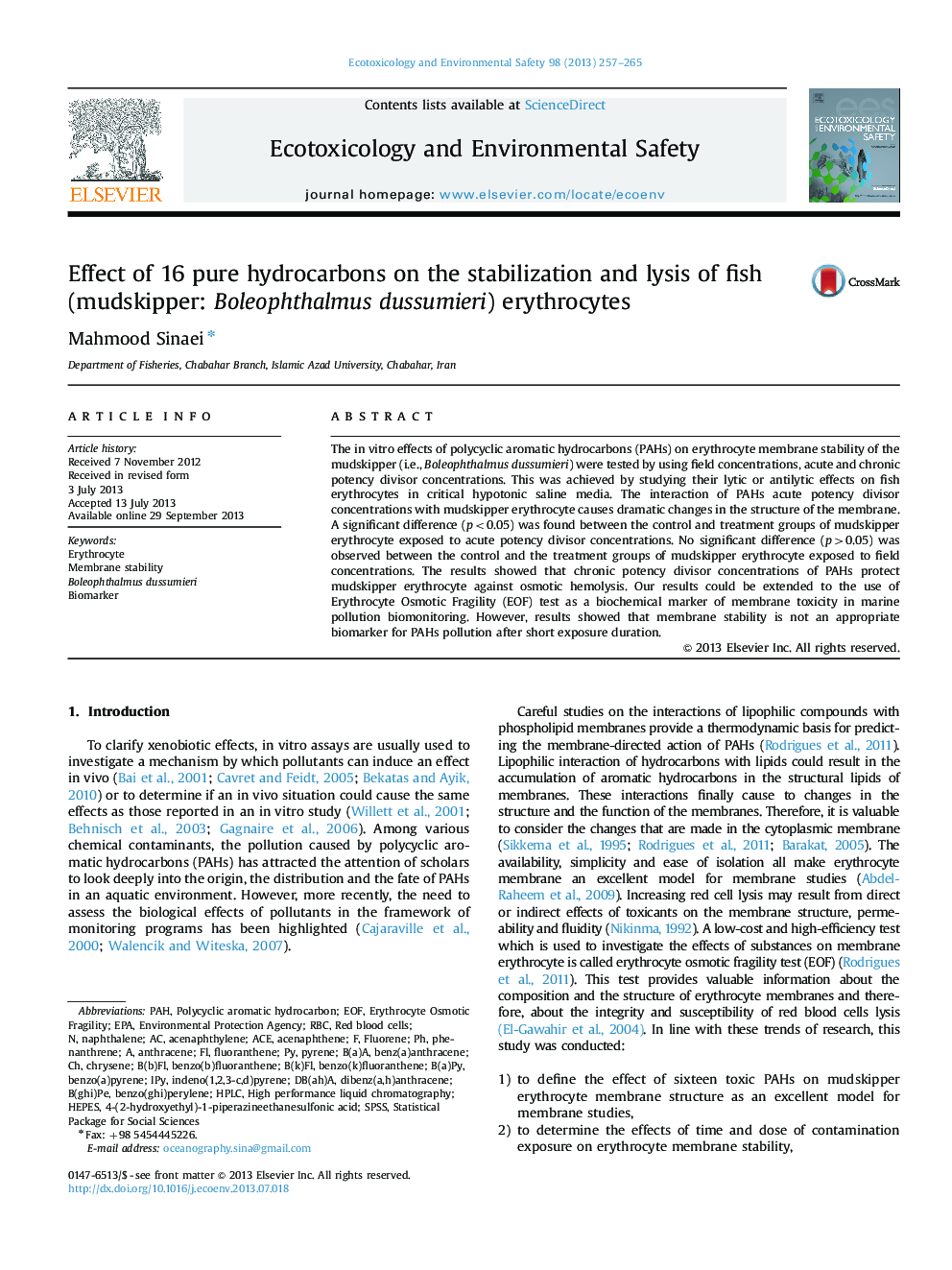| Article ID | Journal | Published Year | Pages | File Type |
|---|---|---|---|---|
| 4420404 | Ecotoxicology and Environmental Safety | 2013 | 9 Pages |
•The in vitro effects of PAHs on RBC membrane stability of mudskipper were tested.•The interaction of PAHs with B. dussumieri erythrocyte causes dramatic changes.•Chronic potency divisor concentrations have an antihemolytic effects.•EOF test in B. dussumieri is suitable as a biochemical marker of membrane toxicity.
The in vitro effects of polycyclic aromatic hydrocarbons (PAHs) on erythrocyte membrane stability of the mudskipper (i.e., Boleophthalmus dussumieri) were tested by using field concentrations, acute and chronic potency divisor concentrations. This was achieved by studying their lytic or antilytic effects on fish erythrocytes in critical hypotonic saline media. The interaction of PAHs acute potency divisor concentrations with mudskipper erythrocyte causes dramatic changes in the structure of the membrane. A significant difference (p<0.05) was found between the control and treatment groups of mudskipper erythrocyte exposed to acute potency divisor concentrations. No significant difference (p>0.05) was observed between the control and the treatment groups of mudskipper erythrocyte exposed to field concentrations. The results showed that chronic potency divisor concentrations of PAHs protect mudskipper erythrocyte against osmotic hemolysis. Our results could be extended to the use of Erythrocyte Osmotic Fragility (EOF) test as a biochemical marker of membrane toxicity in marine pollution biomonitoring. However, results showed that membrane stability is not an appropriate biomarker for PAHs pollution after short exposure duration.
